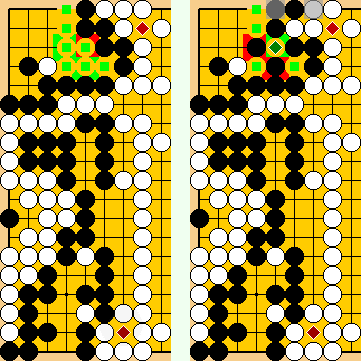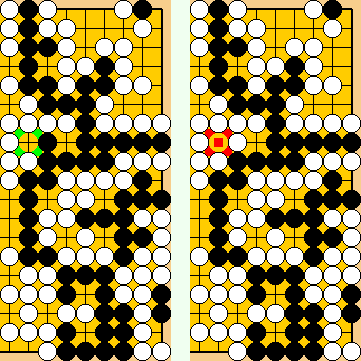New Story Line 2022
Yamada Shinji's Tsuke
|
KataGo starts the endgame on the left side of the board "early", choosing the Tsuke of Yamada Shinji 6p as a precondition for an immediately subsequent further improvement of the classical sequence. Yamada Shinji discovered his tsuke at a time when we had only identified Joachim's Rediscovered Oki and my Second Throw-in, and when the endgame had not begun until after the hanezeki in the lower right corner had been resolved. We will determine the effects of the new move compared to the classical solution of Fujisawa Hideyuki 9p and explain some failures in deviations from the continuation proposed by Yamada Shinji. | |
|
Referenced by ( Let's go back a few years and enter the world of KataGo ... |
|
|
|
For further details, please refer to section "KataGo's Immediate Crosscut after Yamada Shinji's Tsuke" ( |
|
Let's go back in time and enter the world of the amateurs, seeking professional assistance ... |
|
At that time, the endgame was played after White's decision point (i.e. after the capture of the hanezeki's tail here), so that KataGo's Immediate Crosscut could not be identified, as it does not work after Black's borders in the upper left corner have been settled. For further details, please refer to section "KataGo's Immediate Crosscut after Yamada Shinji's Tsuke" ( Please note that Yamada Shinji's Tsuke could not be played in the Semeai Variation here, as Black's resistance (a reply at Since Prof. Jeong SooHyun's kind advice, the endgame was started "early" by us, i.e. after the termination of the Nakade Sequence. For further details, please refer to section "Prof. Jeong SooHyun's Advice to Start the Endgame Early" ( Thus Yamada Shiji's Tsuke finally improved White's score also in the Semeai Variation. |
|
He is unable to resist with
KataGo's Immediate Crosscut at |
|
Jérôme Hubert's Solid Connection with |
|
|
|
Let's utilise the knowledge that existed at the dawn of time ... |
|
|
|
For further details, please refer to section "Jérôme Hubert's Correction of the Mutual Occupation of Opponent's Liberties" ( |
|
Choosing Jérôme Hubert's Connection at
|
|
Capture Variation (left side of the board): Fujisawa Hideyuki's Atari (at left):
Yamada Shinji's Tsuke (at right):
White gained one point at the left side of the board through Yamanda Shinji's Tsuke. |
|
Capture Variation (right side of the board): Fujisawa Hideyuki's Atari (at left):
Yamada Shinji's Tsuke (at right):
White gained one point at the right side of the board through Yamanda Shinji's Tsuke. In total, Yamama Shinji's Tsuke gained White two points. White + 1 => White + 3 |
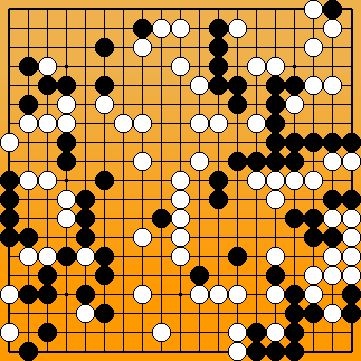
 2022MainLine
2022MainLine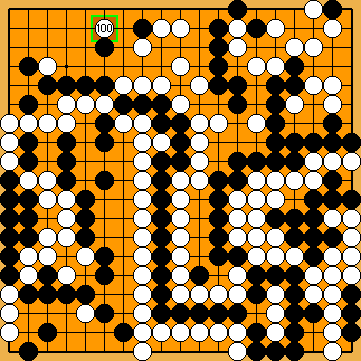
 : (
: ( 2022MainLine
2022MainLine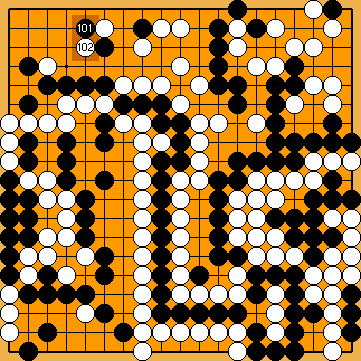
 :
:
 2038
2038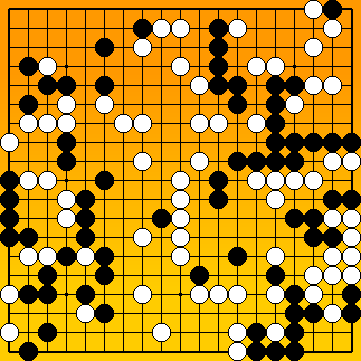
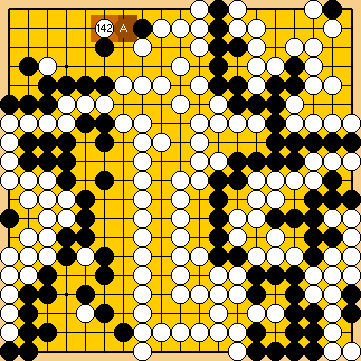
 : (A
: (A  2037
2037 chosen by Fujisawa Hideyuki.
chosen by Fujisawa Hideyuki. ) will result in a seki in the upper left corner (as you will see below), but which will collapse, as White's large group at the left can be taken of the board in this alternative Main Variation.
) will result in a seki in the upper left corner (as you will see below), but which will collapse, as White's large group at the left can be taken of the board in this alternative Main Variation.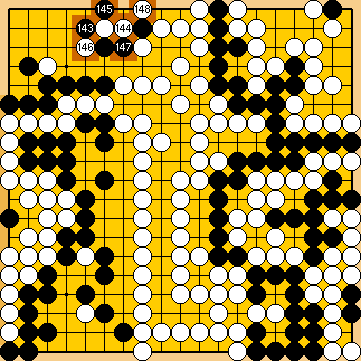
 : (144
: (144  , intending to save his single stone at the upper edge, and capturing White's intruder(s).
, intending to save his single stone at the upper edge, and capturing White's intruder(s). : (146
: (146  , instead, does not work any longer.
, instead, does not work any longer.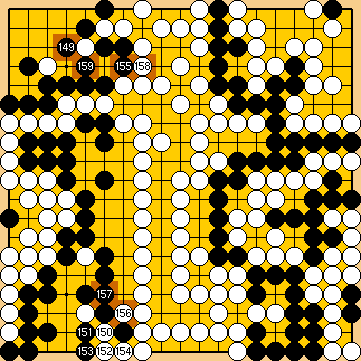
 :
: :
: : (156
: (156  would be one point worse here, and so a mistake.
would be one point worse here, and so a mistake.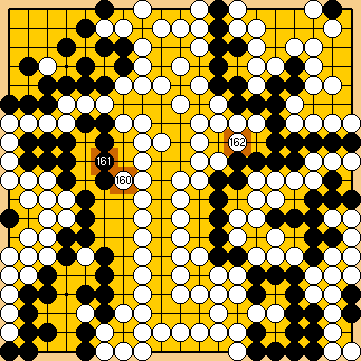
 :
: :
: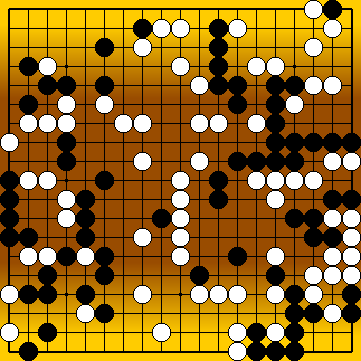
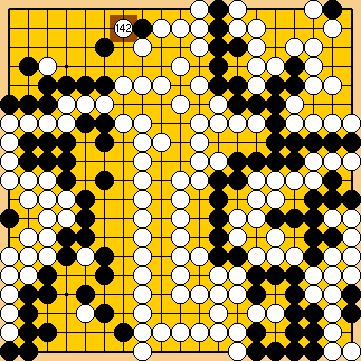
 2037
2037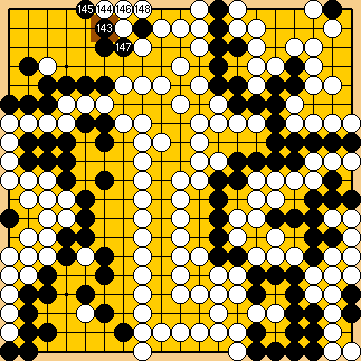
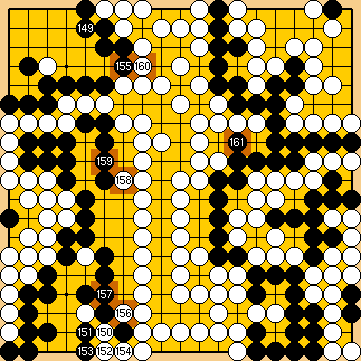
 :
: :
: